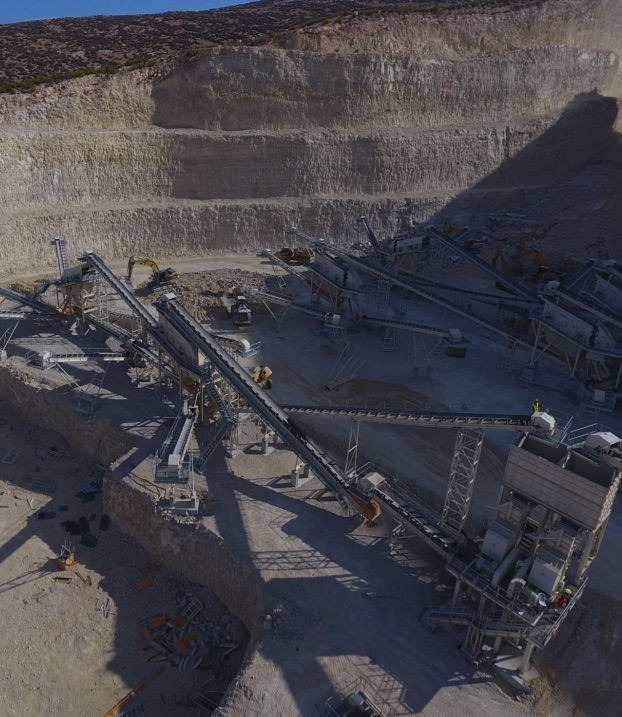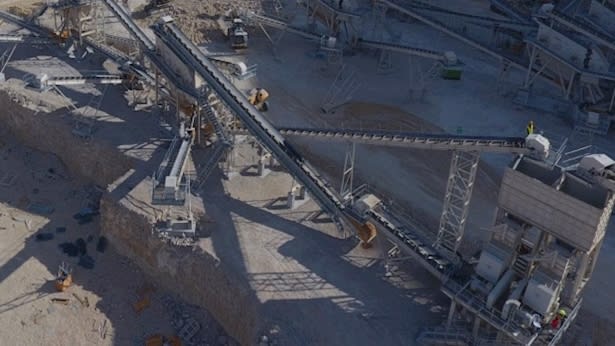

The Israel Land Authority announces that the royalties paid to the state in projects exempt from the tender for gravel mining will be doubled and even more. It was decided to update the royalties at the beginning of 2020 and now at the end of staff work, Rami reveals the pricing decided upon: instead of the NIS 5 currently paid for quarrying a ton of gravel, NIS 8 will be paid starting this July, and a year later the amount will increase to NIS 11 per ton. . The decision is expected to affect public companies, for example
Shafir Engineering
-1.85%
Base:2,320
opening:2,301
Tall:2,302
low:2,272
change:2,296,467
Page Quote News Graphs Company Profile Recommendations
More articles on the subject:
,
Ashtrom Group
-0.21%
Base:6,330
opening:6,304
Tall:6,355
low:6,304
change:273,328
Page Quote News Graphs Company Profile Recommendations
More articles on the subject:
and
Oron Group
-0.35%
Base:806.9
opening:806.9
Tall:806.9
low:804
change:26,543
Page Quote News Graphs Company Profile Recommendations
More articles on the subject:
.
An analysis by the Israel Land Authority found that the companies that approach gravel mining tenders are willing to pay higher amounts than those stipulated in tender-exempt projects. Thus, the lowest average bid indicated by Rami is NIS 7.4 in the 2012 Netsat Netsuot tender – a difference of NIS 3.8, which is about 79% compared to the price exempt from tender. In the tender for the Har Shahar quarry from 2017, the winner offered a royalty of NIS 23.11 – NIS 18 higher than the royalty exempt from the tender, ie by 370%. In the auction at Alpha House for basalt gravel, the gap is even more than ten times higher.
In the work published by Rami, respondents to the allegations made by the mining companies against raising the royalty. Yes for example it has been argued that there are differences between the quarries in aspects like material quality, quarry area and operational challenges, and this variance does not draw conclusions from the results of the auctions on average market prices. The RMI responds that the various characteristics were examined and “a heterogeneous picture was obtained and it was found that the results of all the tenders (except for one tender for which no bids were received) embody a royalty price that is significantly higher than the price list royalty.” They further add that “moreover, the average quality of the exempt quarries, in the parameters mentioned above, exceeds that of the quarries marketed in the tender.”
Another argument that has been heard is that quarries that won the tender exemption made massive investments and the increase in the royalty will result in a loss of profitability and returns on capital that form the basis of the business plans under which they operated. According to Rami, this claim cannot be accepted for two main reasons: First, the exempt quarries are old quarries that have been operating for decades, during which these quarries recorded excess returns on the capital invested due to the better allocation conditions they enjoyed, especially the reduced royalty. Second, the determination of the mechanism for periodic review of the royalty price (although the last update was implemented in 2006) is known to the quarry operators and such examinations have been conducted over the years.
Shafir Engineering is conducting mediation proceedings with Rami, after the latter demanded that it vacate the Rose Quarry by the end of 2020. Rami’s announcement of the increase in the royalty from gravel mining states that “the Authority has established special provisions for quarries to be returned by December 31, 2222, according to which they will be entitled to a refund of the royalties in accordance with this decision, provided the quarry resides at the authority. Alongside this, the company also mines gravel in abandoned and quarry quarries. In its reports for the third quarter of 2020, Shafir stated that the increase in the royalty “does not have a material effect on the results of the field of activity.”
Oron Holdings Group owns two quarries in which it digs gravel. One, a string quarry in Tene Omarim, with a mining rate of 1.9 million tons per year and a maximum production capacity of 4 million tons per year (as of the end of 2019). The second is a sparkling quarry in the Arava, with a maximum production capacity of one ton per year. Ashtrom Industries has three quarries: Adumit, Sorek, and Betar Routes, in which, among other things, gravel is mined.
Comments on the article(0):
Your response has been received and will be published subject to system policies.
Thanks.
For a new response
Your response was not sent due to a communication problem, please try again.
Return to comment


